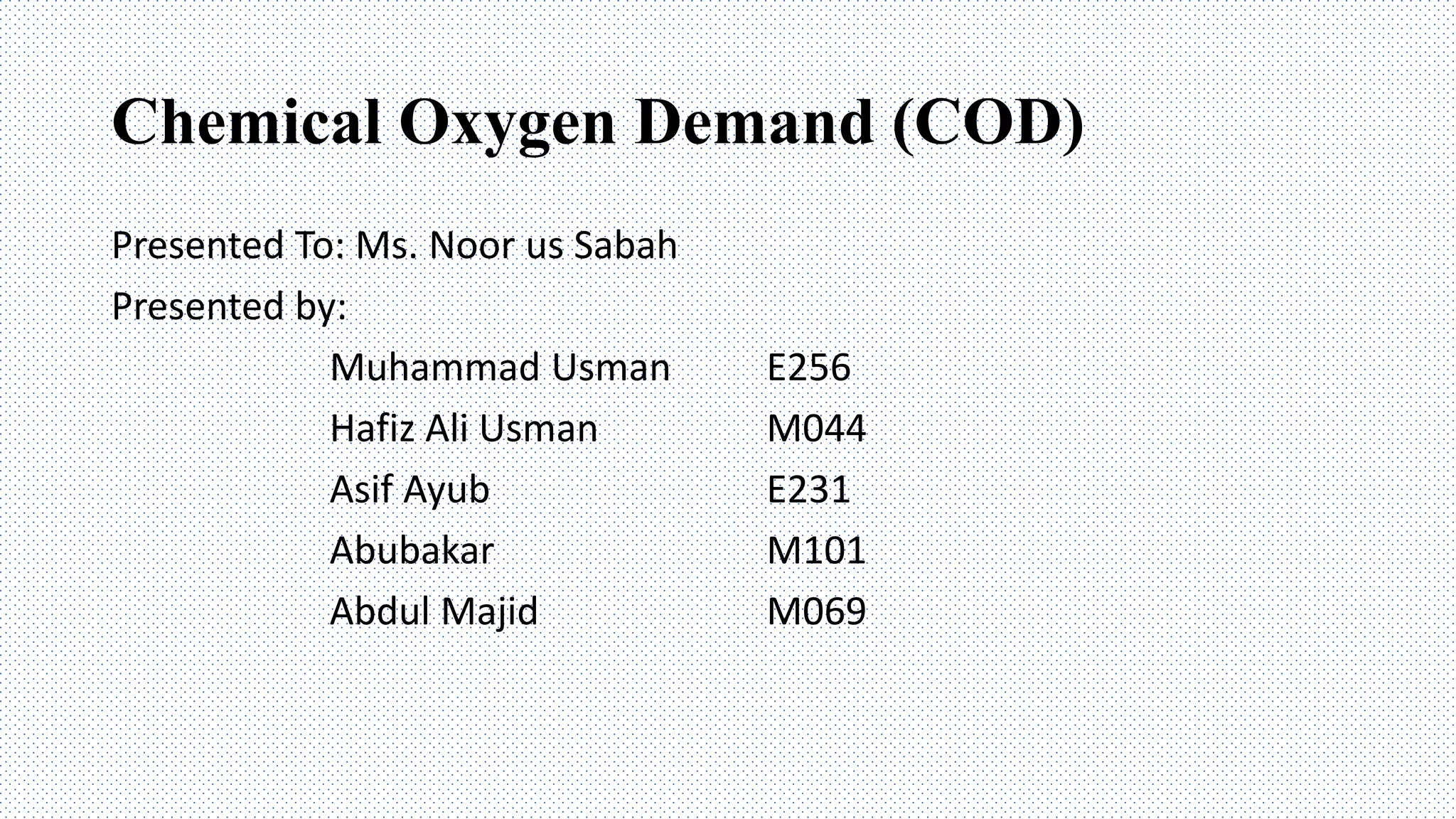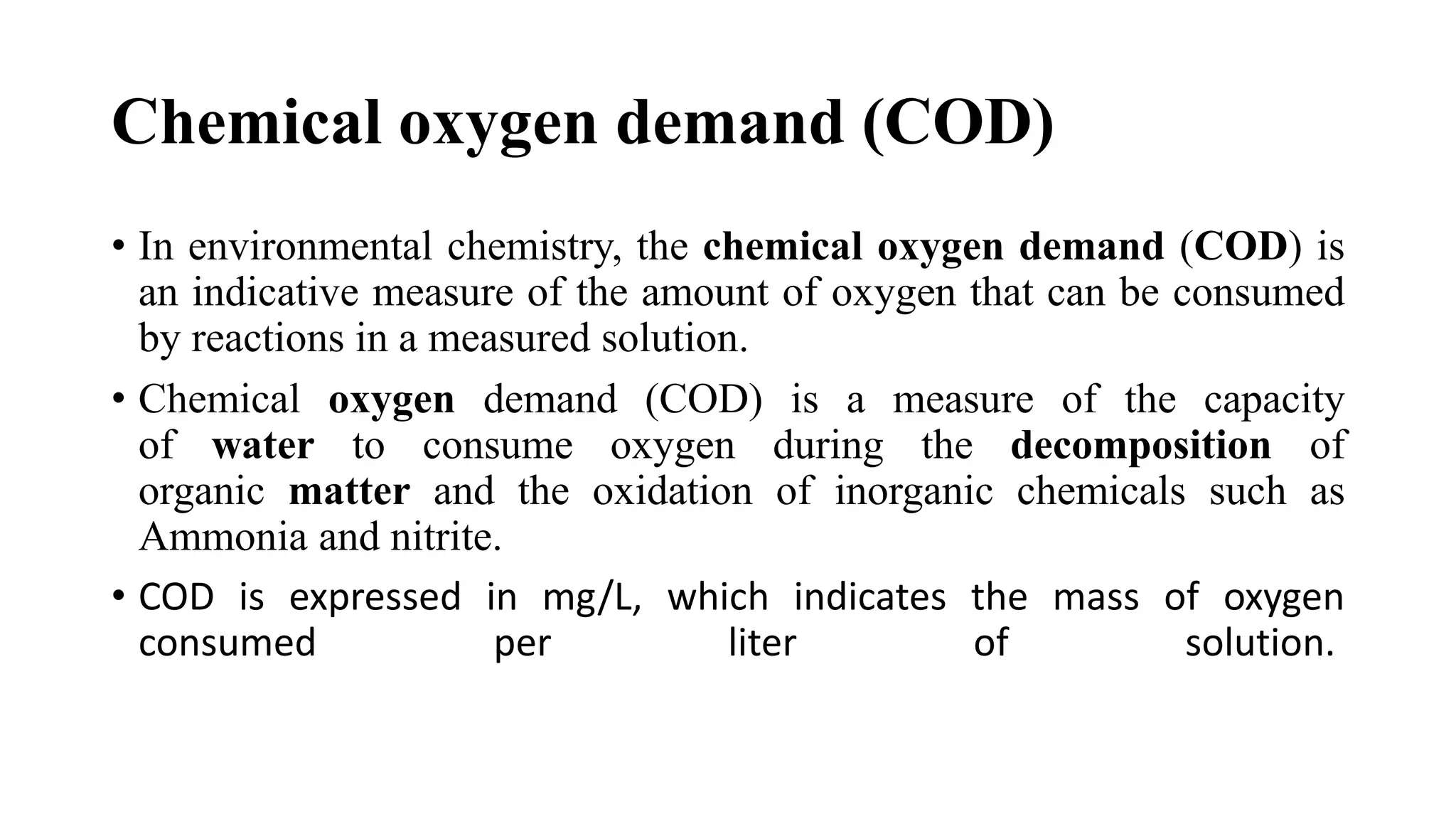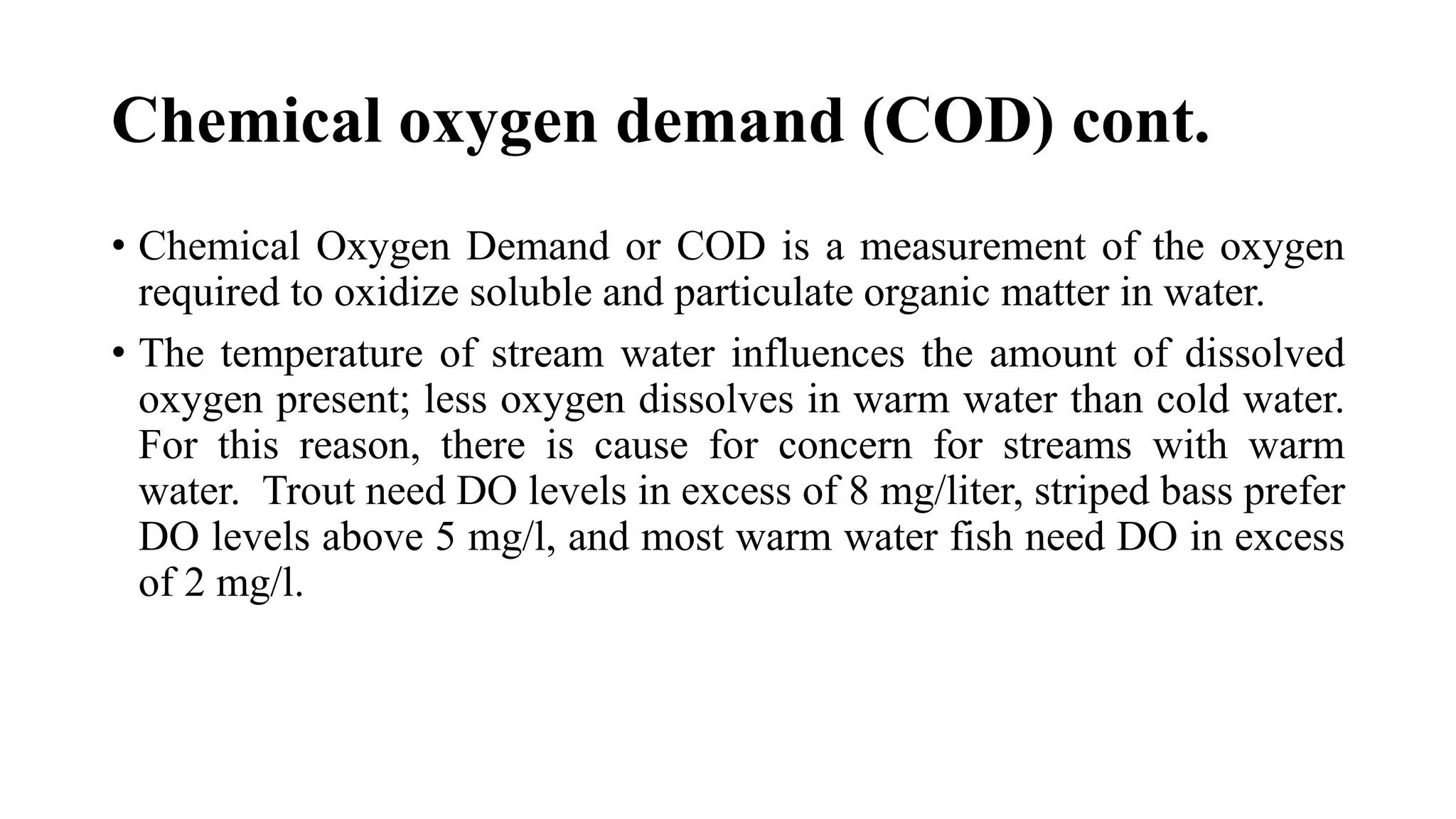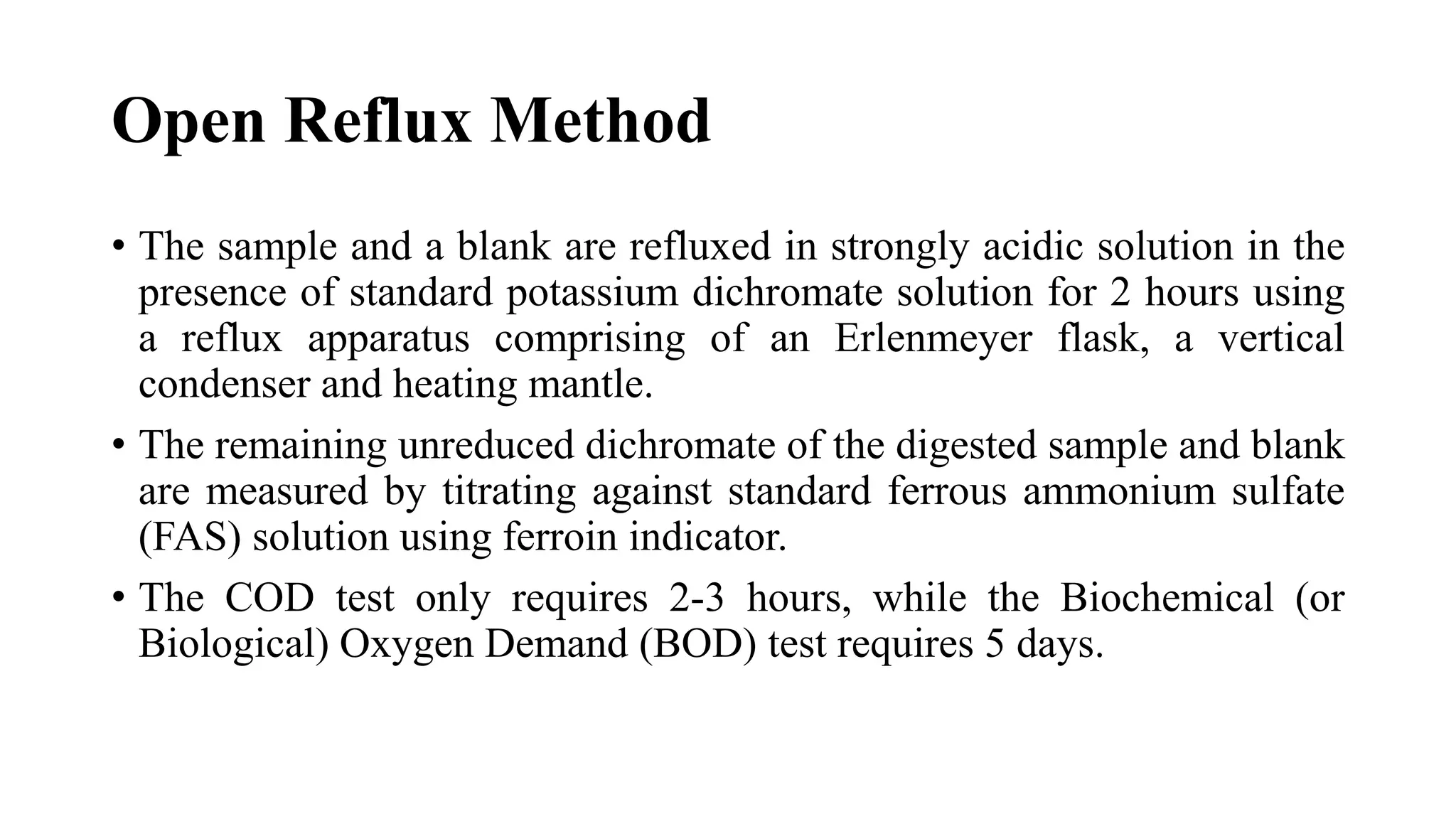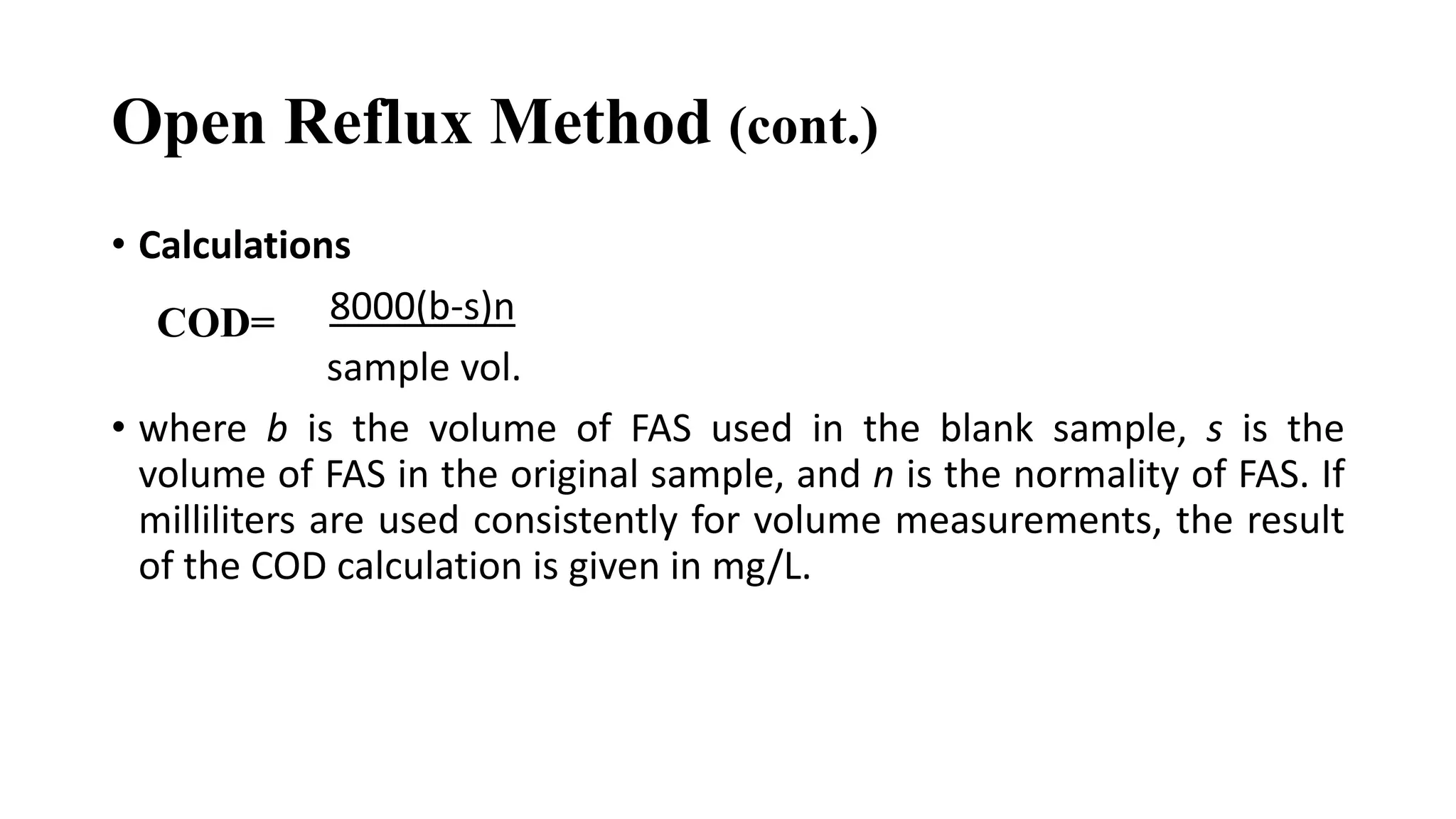Chemical oxygen demand (COD) is a measure of the oxygen-consuming capacity of inorganic and organic matter in water. COD determines the amount of oxygen required to oxidize organic compounds and inorganic matter in water. There are two main methods to measure COD - the open reflux method and closed reflux method. The open reflux method involves refluxing the sample and dichromate solution for 2 hours, then titrating the remaining dichromate with ferrous ammonium sulfate to determine COD concentration in mg/L. A high COD means more oxidizable organic material is present in water, which can reduce dissolved oxygen and harm aquatic life. COD is useful for assessing waste strength and effects on receiving environments

